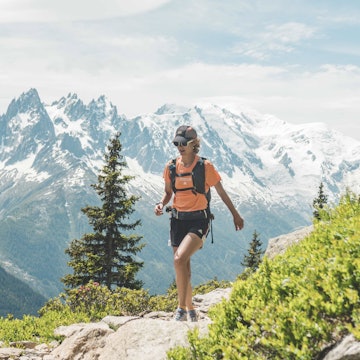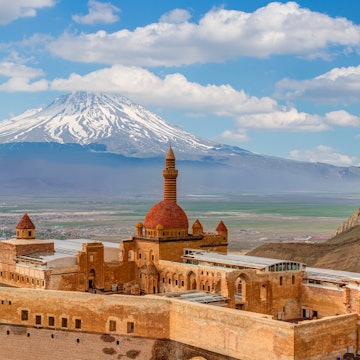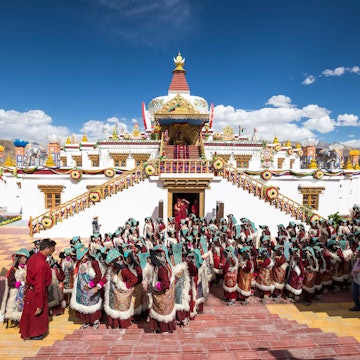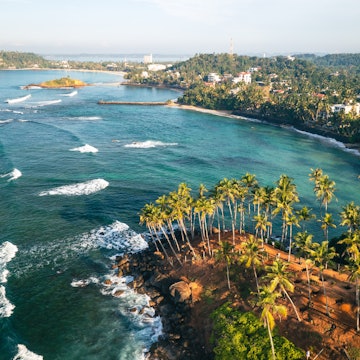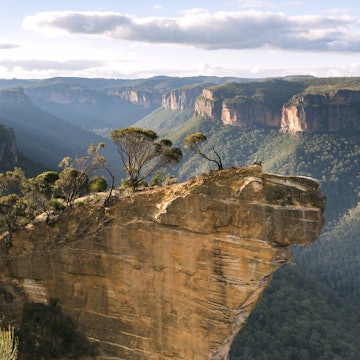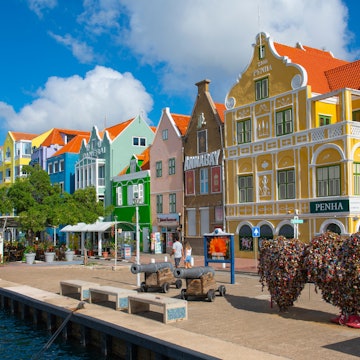
Keeping ancient traditions alive in Nara and Wakayama Prefectures
Sponsored by
Mar 9, 2021 • 9 min read
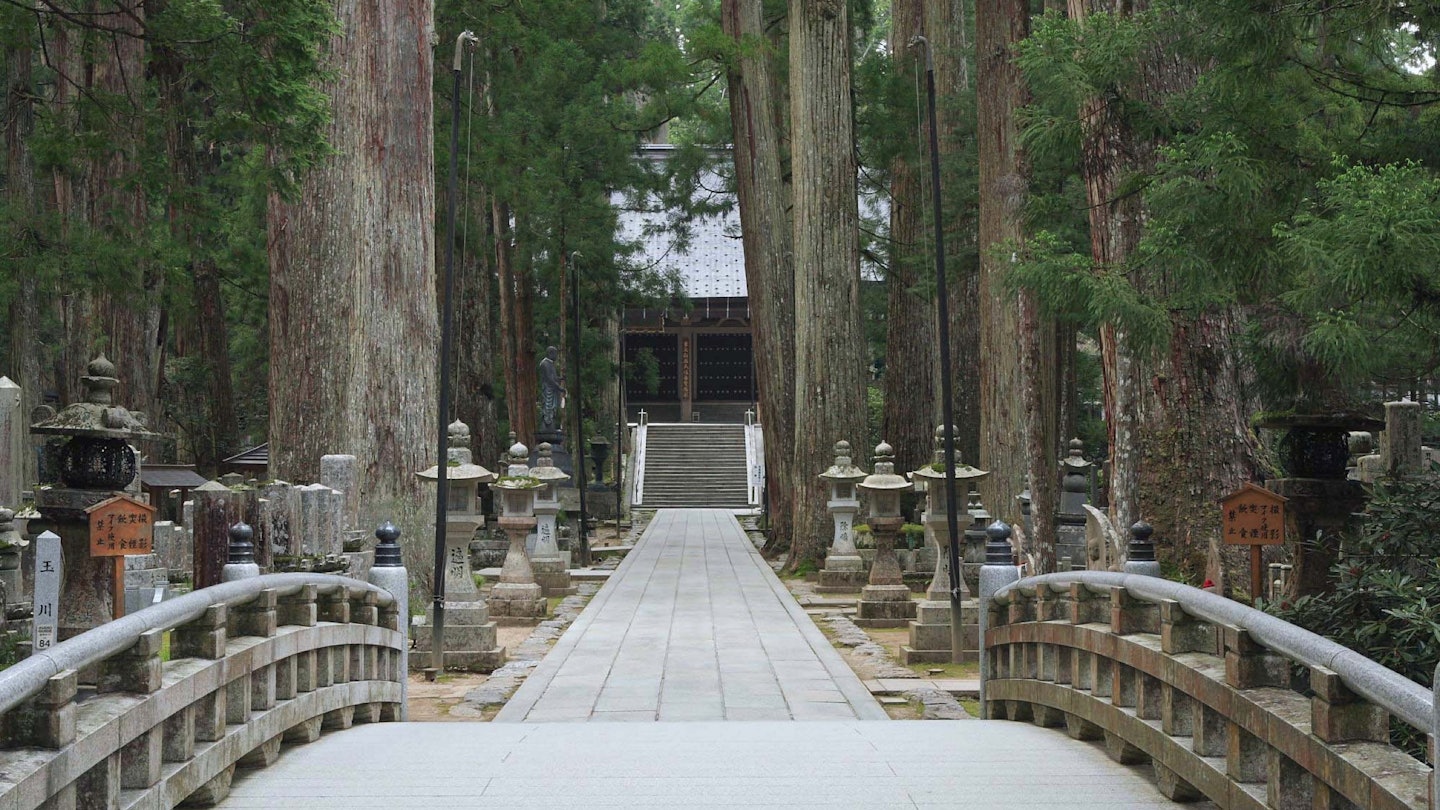
Okuno-in is an expansive, breathtaking cemetery with towering cedar trees and moss-covered grounds © Courtesy of Kinki Transportation Bureau
From religious practices to handicrafts, sake to architecture, Japan’s rich tapestry of traditions is regarded with reverence around the world. On this cultural pilgrimage through Nara and Wakayama prefectures, visitors have the chance to experience these traditions first-hand, offering a unique opportunity to disconnect from the stresses of modern life, reconnect with nature, and take a glimpse into the past to fill the present with a sense of peace and clarity.
Neighboring prefectures Nara and Wakayama are part of the seven prefectures that comprise the Kansai area of Western Japan. This four-day itinerary takes visitors through the lush, magical forests of the Kii Mountain range to some of the country’s most venerated shrines and temples, as well as many other traditional cultural experiences: sampling sake (rice wine), making washi paper, and dining on kaiseki cuisine. Osaka makes an ideal base for exploring both Nara and Wakayama prefectures, easily accessible via JR, Kintetsu, and Nankai trains.

Day 1: The ancient city of Sakurai – shrines, somen noodles, and sake
Start your journey in the historical city of Sakurai, 40 minutes by train from Tsuruhashi Station in Osaka (Kintetsu-Osaka Line, ¥640 - about $6 USD). Sakurai is an easy town to explore on foot (or by bike, if you don’t plan to drink sake – these can be rented from Kintetsu Sunflower Bicycle Rental). From the station, head to the venerable Ohmiwa Jinja Shrine, one of Japan’s oldest shrines, at the foot of Mount Miwa, about a 25-minute walk from the station.
At Ohmiwa Jinja Shrine, uniquely, the deity is believed to be enshrined in the Mount Miwa rather than the shrine itself, so prayers are directed to the mountain. Ōmononushi, is the god believed to have created Japan, imbuing this area with enormous spiritual significance. Hanging from the eaves of the impressive worship hall is a sugidama, a ball of cedar branches hung at sake breweries and shops – Ōmononushi is also known as the deity of sake.
At this magical-feeling shrine, which is surrounded by nature, including a stately 500-year-old cedar tree, it’s also common to see Shinto priests doing their daily rituals. And a short walk to the nearby Saijinja Shrine – which features natural spring water from Mount Miwa, said to have healing properties – is essential for this visit.
A 15-minute walk north, find the 170-year-old somen noodle shop, Senjutei Somen Chaya. While ramen, soba, and udon might be the most well-known Japanese noodles outside Japan, somen are traditional handmade noodles loved by locals. Sakurai is the hometown of somen noodles, known as Miwa somen, dating back 1,200 years when they were first made at Ohmiwa Jinja Shrine at the hand of a priest’s son.
Made from flour and water, strands of somen are long, delicately thin, and snow-white. At Senjutei Somen Chaya, somen are served in an assortment of traditional and creative ways. Chilled somen – the most common way to eat it – are arranged in dainty bundles on a bamboo platter, served with a soy sauce-based dipping sauce and condiments like spring onions and myoga (Japanese ginger); there are even different varieties of somen to try – green (accented with matcha), and yellow (flavored with egg yolk).

From Senjutei Somen Chaya, take a 15-minute walk to Imanishi Sake Brewery, which dates back more than 350 years. Nara holds enormous significance in the sake world and is regarded as the birthplace of modern sake. For several hundred years from the 11th century, much of the brewing was centered in temples and shrines, and during this time, key advancements were made by ingenious monks and priests. Imanishi Sake Brewery is the only sake brewery remaining in Miwa, specializing in small-batch, handmade sake brewed using local rice and subterranean water from Mount Miwa. Visitors to Imanishi Sake Brewery can take a tour around the historic 170-year-old brewhouse, as well as enjoy sake tasting of different types of seasonal sake (¥500, or $4.75 USD, reservations recommended).
For the rest of the afternoon, there’s plenty of other fascinating sites in and around Sakurai to explore if time permits – Abe-Monjuin temple and the Gassan Sword Museum are within walking distance, and a short bus ride away are Hasedera Temple and Tanzan Jinja Shrine. Head to Kashihara city via the Kintetsu-Osaka line (10 minutes, ¥210 or $2 USD) to spend the night at Candeo Hotels Nara Kashihara, which grants easy access for the next day’s explorations.

Day 2: Step back in time at Imaicho
Imaicho is a picturesque, beautifully preserved historic town in northwestern Nara prefecture. It started out as a temple town for nearby Shonenji Temple, then flourished as a wealthy merchant town. Streets are lined with elegant machiya (traditional wooden townhouses) dating back to the Edo period. Several of these are open to visitors, such as the Imanishi Family Residence, the former home of the town's most powerful family that dates back to 1650. The entire town is like a living museum and the perfect place to wander the streets and alleyways to observe traditional architecture, browse for traditional handicrafts and edible gifts, and stop to soak up the atmosphere in a quaint cafe.
Near the center of Imaicho, Tama is a charming farm-to-table restaurant with a focus on local ingredients cooked in a French style. The restaurant is set in a renovated machiya, offering a sophisticated blend of traditional and contemporary Japanese architecture. Both lunch and dinner are omakase (set menus) of colorful, creative and artfully plated dishes, such as local grilled sanma (Pacific saury) fish, new onion potage with vinegar jelly, Yamato pork sausage wrapped in cabbage, and Nara strawberry soup with white chocolate gelato.
To return to Osaka, take the Kintetsu-Osaka Line, Kintetsu Osaka Express or Rapid Express from Yamato-Yagi station back to Tsuruhashi station (25-35 minutes, ¥570-¥1,090, or $5.50-$10.50 USD).

Day 3: Mount Yoshino, washi paper and a traditional Japanese inn
The Yoshino area is a place of deep spiritual and cultural significance in Japan, part of the Sacred Sites and Pilgrimage Routes in the Kii Mountain Range. It’s also one of the most famous places in Japan to see cherry blossoms. To reach Yoshino from Osaka, take the Kintetsu-Minamiosaka Line, the Kintetsu-Limited Express or Rapid Express from Osaka-Abenobashi Station to Yoshino Station (70-90 minutes, ¥990-1,510). From Yoshino Station, Fukunishi Washi Honpo is easiest accessed by taxi, which takes approximately 15 minutes.
Washi is traditional Japanese paper revered for its elegance and natural finish, used for everything from shoji screen doors to stationary. The paper made at Fukunishi Washi Honpo dates back around 1,300 years, with the craft passed down for generations through the Fukunishi family to the now sixth-generation paper artisan, Masayuki Fukunishi. The abundance of kuzu (Japanese mulberry trees) for the paper fibers and pristine water of the area create an idyllic setting for the craft. Visitors can try their hand at papermaking (¥1,500, about $14 USD, reservations required), and can buy washi souvenirs.
Take a cab to a nearby ryokan (traditional Japanese inn) to leave your luggage and stroll to Yoshino Shimo Senbon to potter along the main street, where there are many little stores selling traditional foods as well as local handicrafts. Keep an eye out for kakinoha sushi at Hyoutarou – cylindrical sushi wrapped in persimmon leaves, an ancient method of sterilization and preservation, and Kuzu mochi – traditional sweets of the area made with arrowroot starch. Stop by the stylish cafe Nakai Shunpudo to see the mochi being made, and to take in the magnificent mountain views.

A visit to Kinpusen-ji Temple is also recommended, one of the most important temples of Shugendo, a religion that combines elements of folk mountain worship, Buddhism and Shinto. It’s also the second largest timber structure in Japan after Todaiji Temple in Nara.
Lodge for the evening at the ryokan. These inns are often family-run, with warm hospitality, scenic vistas, and rejuvenating natural hot springs. They also often serve excellent traditional Japanese food. As many restaurants close early in the nearby village, it’s recommended to reserve dinner and breakfast at your ryokan.

Day 4: Exploring majestic Koyasan
Early risers can head to Kinpusen-ji Temple to observe morning otsutome (worship service), incorporating taikō drumming and the sounding of the horagai (giant conch), a spiritual start to the day that sets the pace for exploring the majestic alpine temple complex of Koyasan.
Start early by taking the train from Yoshino Station 1 hour to Hashimoto station. From there, take the charming Tenku sightseeing train (reservations required), 40 minutes to Gokurakubashi station. The Tenku sightseeing train is equipped with large windows for observing the lush rural landscapes. From Gokurakubashi station, the cable to Koyasan station to an exhilarating ride up a steep, densely forested incline with sweeping views of the area.
In the 9th century, Buddhist monk Kōbō Daishi Kukai established the Danjō Garan temple complex dedicated to Shingon Buddhism. It’s a deeply spiritual, tranquil, and enchanting place where all visitors are welcome. On arrival to Koyasan, the grand Daimon Gate is the first attraction and official entrance of the temple complex and is a majestic spot for sunset.
Aside from Daimon Gate, key points of interest include the Kongobu-ji Head Temple, the headquarters of Koyasan Shingon Buddhism, where visitors can enter to see the elaborately carved details of the temple, elegant painted fusuma screens, and the impressive 21,000-square-foot rock garden.

Okuno-in is an expansive, breathtaking cemetery with towering cedar trees and moss-covered grounds weave between around 200,000 graves and monuments, and also houses the mausoleum where Kōbō Daishi Kukai is said to be in eternal meditation, and still functions as a teaching ground. Koyasan is relatively flat and easy to explore on foot and is a thoroughly enriching experience filled with quietude and contemplation, abundant nature and the calming presence of monks in their saffron robes.
Pause for lunch at Kadohama Goma-tofu Sohonpo, a specialist in sesame (goma) tofu, a quintessential food of Japanese Buddhist vegetarian cuisine. Goma-tofu sohonpo supplies nearby temples, including Kongobu-ji Head Temple, and is built around culinary traditions spanning 1,200 years. Enjoy the goma-dofu in a sunlit-filled dining room, or on the terrace in warmer months. There’s sesame-based desserts, but the kaiseki course comes highly recommended, including other traditional dishes such as vegetable tempura and konjac sashimi – reservations can be made online.
Feeling stimulated, nourished and fulfilled, return to Osaka via the train and Nankai Koyasan line to Shin-Imamiya Station – or extend your visit to spend an enlightening overnight stay at a shukubo (temple lodging).
Note: There are COVID-19 measures in place across Nara and Wakayama such as ventilation, temperature checks and limits on the number of guests to temples and other sites, as well as hand sanitizer stations and face masks. So when you’re ready to travel again, you can be sure your trip here will be as safe as possible.
You might also like
Sponsored by Kinki Transportation Bureau
As a travel entertainment and inspirational media outlet, we sometimes incorporate brand sponsors into our efforts. This activity is clearly labeled across our platforms.
This story was crafted collaboratively between Kinki Transportation Bureau and Lonely Planet. Both parties provided research and curated content to produce this story. We disclose when information isn’t ours.
With sponsored content, both Lonely Planet and our brand partners have specific responsibilities:
-
Brand partner
Determines the concept, provides briefing, research material, and may provide feedback.
-
Lonely Planet
We provide expertise, firsthand insights, and verify with third-party sources when needed.







